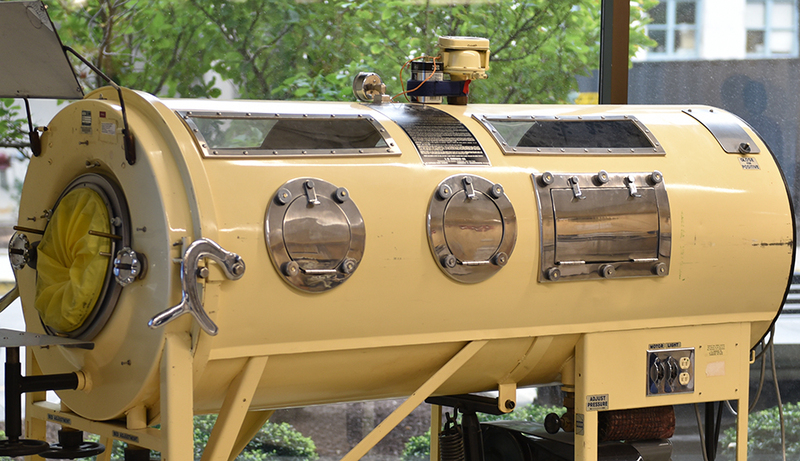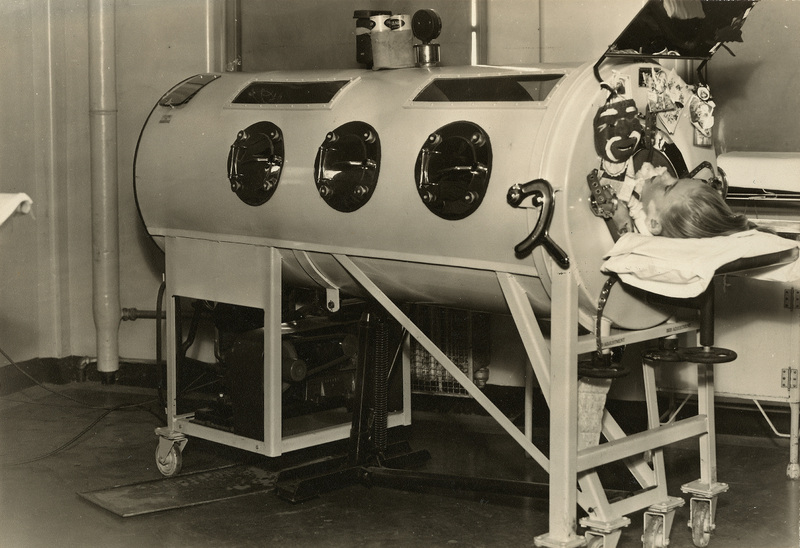The Emerson Iron Lung
Emerson Respirator “Iron Lung” serial number TC1, circa 1940s
The original “iron lung” respirator was designed by Phillip Drinker with Louis Agassiz Shaw at the Harvard School of Public Health. Drinker assigned his respirator patent to Boston manufacturer Warren E. Collins, who began production of the device. In 1931, John Haven Emerson created an improved, less expensive iron lung. By 1935 he had successfully challenged Drinker’s patent and his version of the iron lung was in widescale production from the 1930s through the 1970s. The serial number on this Emerson model, TC1, indicates that it was the first one produced of this particular design.
Photograph of the Emerson Respirator in Use, 1946
John Haven Emerson's new design became the dominant “iron lung” in use during the polio epidemics of the 20th century.
“The Emerson design replaced blowers and valves with a flexible diaphragm. The flexible diaphragm was fashioned from elk hide in a dual layer. In this fashion, if one layer became torn, the second redundant layer would continue operation. Emerson also improved the shape and size of the chamber by having it manufactured by a boiler company in Boston (Market Forge). The result was a quieter, simpler, lighter, and less expensive device. Although difficult to source, the Emerson device was said to cost half the price of the Drinker device.” —Quoted from “A Tribute to John H. Emerson” by Richard D. Branson, RRT Respiratory Care, July 1998 Vol. 43, No 7.


